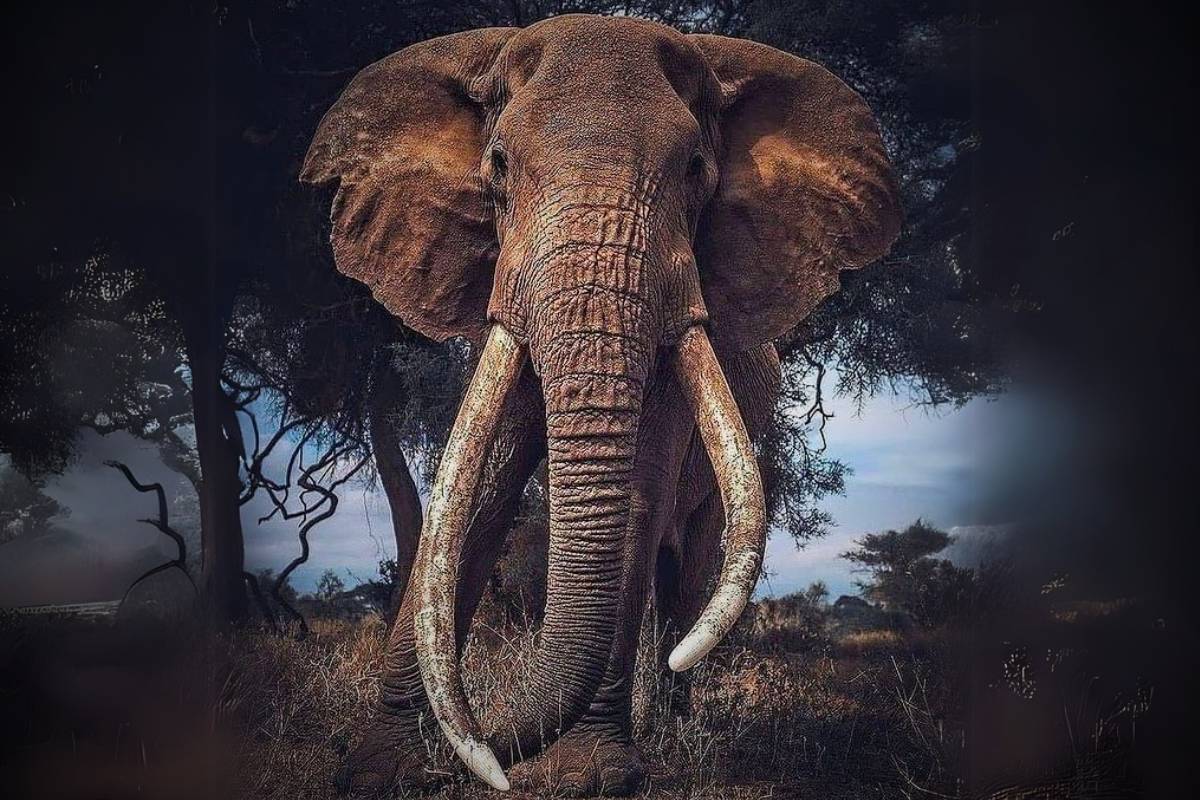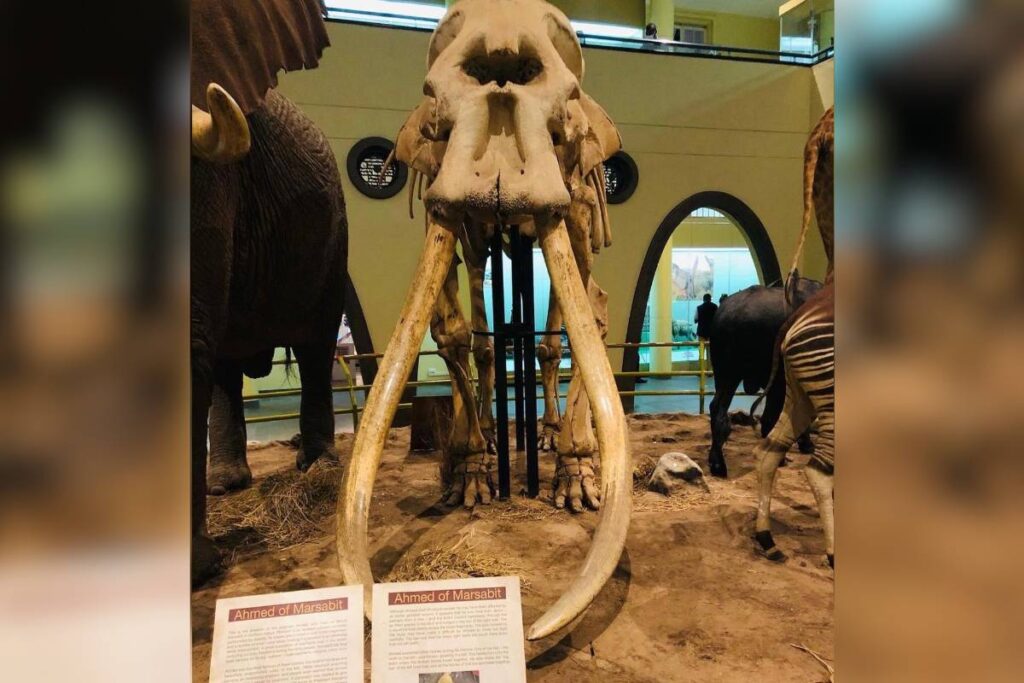Ahmed the Elephant: The Legendary Giant of Africa

Ahmed the Elephant, a symbol of grandeur and resilience, holds a remarkable place in history as one of the most famous and revered elephants of the African continent. Known for his majestic presence and unique cultural significance, Ahmed has become an enduring icon of wildlife conservation and the African savanna’s natural heritage.
Table of Contents
ToggleThe Early Life of Ahmed the Elephant
Ahmed was born in the vast wilderness of Kenya in the mid-20th century, where he quickly became a standout member of his herd. His extraordinary size, long tusks, and gentle demeanor made him a spectacle of nature.
As a “tusker,” Ahmed was one of the rare elephants whose tusks grew so long that they nearly touched the ground. Such elephants are increasingly scarce due to elephant poaching and natural attrition, which only added to Ahmed’s mystique.
Ahmed the Elephant roamed freely in the Marsabit National Reserve, a region famed for its striking landscapes and diverse wildlife. His presence brought tourists, researchers, and photographers, all eager to witness this magnificent creature in his natural habitat.
Ahmed’s Significance to Conservation Efforts
Ahmed’s fame transcended his natural habitat, making him a beacon for wildlife conservation. In the 1970s, poaching was rampant across Africa, driven by the demand for ivory. The African elephant population was under severe threat, and Ahmed, with his immense tusks, became a prime target for poachers.
Recognizing the urgent need to protect this national treasure, Kenya’s first president, Jomo Kenyatta, declared Ahmed a “living monument.” He was placed under 24-hour protection by armed guards, an unprecedented move at the time.
This act not only safeguarded Ahmed but also spotlighted the need for stringent conservation measures to protect elephants and their ecosystems.
Ahmed the Elephant – Role in Kenya’s Culture
To the local communities of Marsabit, Ahmed was more than a majestic animal; he was a symbol of strength, wisdom, and endurance. Stories of Ahmed were passed down through generations, often highlighting his intelligence and connection to the land. One of the most fascinating tales recounts Ahmed climbing a steep hill backwards, a behavior attributed to his acute awareness of how his immense tusks could hinder him on narrow or uneven paths.
Other stories speak of his remarkable ability to sense danger, his uncanny knack for finding water during droughts, and his peaceful interactions with humans who showed him respect. These anecdotes deepened his legendary status, portraying him as not only a physical giant but a creature of extraordinary character.
Ahmed’s legacy also reinforced the bond between people and nature, encouraging locals to take pride in their natural heritage and actively participate in conservation efforts.
The Legacy of a Legend

Ahmed the Elephant lived a long and peaceful life, thanks to the extraordinary measures taken to protect him. He died of natural causes in 1974, leaving behind an indelible legacy. His body was preserved and is displayed at the Nairobi National Museum, where it serves as a poignant reminder of the importance of conservation.
Ahmed’s story continues to inspire global efforts to protect endangered species. His life demonstrates the profound impact a single animal can have in raising awareness and driving action to safeguard wildlife.
Lessons from Ahmed the Elephant: The Importance of Conservation
Ahmed’s journey highlights the critical importance of conservation in preserving biodiversity. Elephants play a vital role in maintaining the health of ecosystems. They aid in seed dispersal, create water holes used by other animals, and maintain the balance of vegetation in their habitats. Protecting such keystone species ensures the survival of countless other forms of life.
The steps taken to protect Ahmed the Elephant underscore the need for collaborative efforts between governments, local communities, and conservation organizations. From anti-poaching initiatives to habitat preservation, every measure contributes to securing the future of wildlife.
Challenges Facing Elephants Today
While Ahmed’s story is a beacon of hope, the challenges facing African elephants persist. Poaching, habitat loss, human-wildlife conflict, and climate change continue to threaten elephant populations. Despite international bans on ivory trade, illegal poaching remains a lucrative enterprise.
Efforts like those made for Ahmed must be expanded to protect remaining tuskers and other wildlife. Modern technology, such as GPS tracking and drones, alongside traditional conservation methods, can bolster these efforts.
How Ahmed Inspires Modern Conservation Strategies
Ahmed’s protection was a trailblazing effort in wildlife conservation. Today, his story is used to educate and inspire future generations. Schools, conservation programs, and wildlife documentaries frequently reference Ahmed the Elephant as an example of what can be achieved through dedication and unity.
Ahmed’s tale also reinforces the importance of ecotourism in supporting conservation efforts. By promoting sustainable tourism, countries like Kenya can generate revenue that directly funds wildlife protection and provides local communities with alternative livelihoods.
Celebrating Ahmed the Elephant: A Call to Action
Ahmed the Elephant remains a symbol of what humanity can achieve when it prioritizes the protection of nature. His life and legacy call upon us to act decisively in preserving the natural world. From supporting anti-poaching campaigns to advocating for stricter environmental laws, there are countless ways to honor Ahmed’s memory and ensure that future generations can marvel at the magnificence of elephants.
As we reflect on Ahmed’s life, let us remember that the survival of our planet’s most majestic creatures depends on our collective commitment to conservation. The legacy of Ahmed the Elephant serves as both a reminder and a call to action: protect the giants of our world before it’s too late.
Published by Amanda Mills
Amanda Mills is a seasoned digital marketer and accomplished content writer, known for her dynamic approach to creating engaging and impactful digital content. With over a decade of experience in the industry. View more posts







